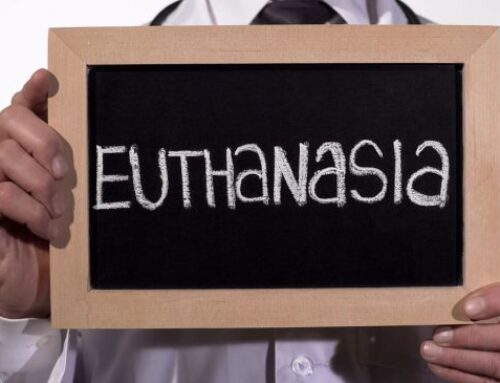“Life is a precious gift. It belongs to the person to whom it was given. . . Tray’s life was hers to make of it what she could. My life is going to be astounding.”
I think that everybody in Canada, who watches or reads the news, is aware of the stories of the deaths of two young Canadians. Tracy Latimer, of Saskatoon, aged 12, was killed by her father and Ryan Wilkieson, aged 16, was killed by his mother who also killed herself. There were quite a number of letters to the papers, some supporting the action of the parents, others condemnatory.
It is not for anyone to judge the subjective guilt or otherwise of another human being. We have to leave that to the Supreme Judge, who will one day judge us all. But we can and should judge the objective right or wrong of any action. For Christians there can be no doubt about the fact that the killing of these two young people was morally wrong even though both children were suffering from very grave disabilities. And I have to say that, while I could never condone their actions, I feel great sympathy for both parents. But, the killing of innocent human beings is always morally wrong.
I was very pleased to see two articles in the “Insight” section of the Toronto Star (9/12/94), under the heading, “Murder of child with disabilities can’t be excused.” The principal article was written by a learned professor, Dr. Jamie MacDougall, who teaches psychology at McGill University in Montreal and is director of research at the Rehabilitation Centre in Ottawa.
Having explained in very clear terms, the symptoms and tragic physical and mental consequences of the disabilities suffered by the young people in question, Doctor MacDougall writes, “One thing is clear. The Latimer family and others like it, need a lot of help, compassion and respect for the burden they have to bear. Meanwhile, the wilful murder of disabled children cannot be allowed to become commonplace in a civilized country like Canada. We all have an obligation to probe deeply into the circumstances that surround these two human tragedies to make sure they never happen again.”
This article, written by an objective intellectual, should clarify the moral aspects for those who may have been, understandably, confused by the written reactions of others to the tragic circumstances involved in both cases.
The second article, in the form of letter, is even more convincing. It is written by an eleven-year-old boy named Teague Johnson. Teague tells us that he is suffering from severe cerebral palsy. Having stated his physical condition, he says that the “Latimer case” caused him a great deal of unhappiness. His own words are much more convincing than mine could be: “I had the gift to live when I was very young. The doctors said I wouldn’t live very long, but I knew I had so much to accomplish still. I had to fight pain all the time. When I was little, life was pain. My foster mom, Cara, helped me learn to manage and control my pain. Now, my life is full of joy. I have a family and many friends. I have a world of knowledge to discover. I have so much to give. I can’t walk or talk or feed myself. But I am not suffering. I use a wheel chair but I am not confined. I have pain, but I do not need ‘to be put out of my misery.’ Life is a precious gift. It belongs to the person to whom it was given. Not to her parents, not to the state. Tracy’s life was hers to make of it what she could. My life is going to be astounding.”
When reading these two articles, it occurred to me that the very same principles can and should be applied to the abortion issue. Science has proven that the “fetus” in the mother’s womb is a human being from the moment of conception. And nobody – doctors, parents or the state – has a right to destroy that life. If it was murder to kill Tracy or Ryan – and Dr. MacDougall says it was – then it is murder to kill a child in the womb. The fact that it is hidden from sight does not change the principle.
If I have any wish for the world of 1995, it is this. That the value and sacredness of human life, healthy or unhealthy, old or young, black or white may be recognized by all and that the digit “1” may disappear from the figure 100,000 given by Statistics Canada for the number of Canadian abortions in 1992.




